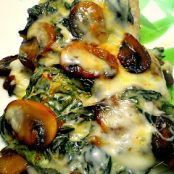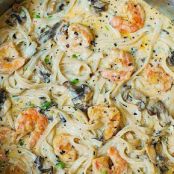.Morel Mushroom
By á-170456
Ingredients
- Morchella Angusticeps
- Morchella Conica
- Morchella Deliciosa
- Morchella Esculenta
Details
Servings 1
Preparation
Step 1
Besides April showers and May flowers, springtime brings the mushroom hunter some of his or her happiest hours. The small, seductive, yet humble morel becomes the lord of the orchards and forests. So esteemed is this fungus with the hollow pitted hat that its admirers will travel hundreds of miles in its pursuit. Part of the morel's mystique is its ability to blend into the background. That dark, perhaps black, triangle of shadow in the distance. Is it a morel or a pine cone? A piece of bark? A stone? Burned wood? Mushroom collectors will race to it to see if a tasty reward awaits the keenest of eye and swiftest of foot. There are many theories as to the best places to look for these mushrooms, but in the end, everyone admits that morels only grow where the hunter finds them.
A morel of the same species may appear in various colors: Morchella angusticeps within the same forest area may be reddish, gray, black, ashen, or brown. It may be isolated or clumped, and has been found in such unlikely places as damp cellars in San Francisco at Christmastime. Unfortunately, it's a Christmas present you can't count on!
Morels emerge as the snow recedes. They fruit most abundantly on disturbed, burned, or recently cleared ground. They may be found under elms that have just died, or in one- to two-year-old wood chip mulch. They also enjoy popping up in fruit orchards. A plentiful crop does not mean that they can be found in the same area in subsequent years, for morels get bored easily and enjoy traveling. Caps usually begin to appear in April in the Continental United States, although we have harvested them in the first week in July in the Sierra Nevada. Because of its appearance, the morel is sometimes called "the sponge mushroom."
The classification of the Morchella genus intrigues the experts. While they all recognize morels, there is still much uncertainty as to whether there are a few or many species. There is much variation in size and color. To us, differentiation between the species is academic. All kinds are cleaned and cooked in the same manner.
Avoid morels whose caps are soft or mushy, or become granular when rubbed: they are too old and wormy. Morels occasionally contain insect larvae that drop out during the drying process. The mushroom-lovers we know have disregarded this aspect of morel enjoyment. After all, they are very small worms.
Fresh morels are occasionally sold in markets. The price is very high. Select them individually, because each one will be costly. So far, no one has been able to cultivate morels commercially. A company in Felton, California, once harvested them in adequate numbers, but went out of business because they couldn't remove sand from the caps. More recently, a graduate of San Francisco State University developed a technique for growing morels that is now being patented. We hope that his process will soon be converted into a commercially profitable product.
Cleaning: Because of the irregular nature of its surface a morel cannot be rubbed or brushed. You may find this worrisome, wondering about what kind of things lurk in the dark pits ready to jump into your béchamel sauce. Never fear, most morels are very well groomed, and the pits are very shallow. Try not to use water. Even brief soaking removes their flavor, as with other foods such as strawberries. If you must, run water over them rapidly and cook them at once. Cut lengthwise or cross-section them to clean out the centers.
Cooking: Large specimens may be stuffed through the hollow base, or halved and packed with fillings. Do not discard the stems. Fry or cook morels whole, especially smaller, younger ones.
It is difficult to describe the famous morel flavor. It is nutty, meaty, and unique whether cooked or dried. There is no substitute for butter to bring out its subtle but treasured character. It adjusts extremely well to a light cream sauce with Madeira wine, which can be poured over chicken breasts or thin slices of veal.
Never eat raw morels or raw morel-like mushrooms such as Helvella lacunosa.
Cooking with Dried Morels: The intensity and character of the morel flavor is not lost in drying. We have used them after three years of storage and found them to be just as aromatic, if not more so, as when fresh.
Reconstitute them in hot water for 5 minutes or simmer them in cream until soft, about 15 minutes, not allowing the cream to boil. Always add the rehydrating liquid to the dish for which your morels are intended. A great deal of the flavor remains in the liquid.
When incorporating dried morels in a recipe calling for fresh specimens, use 3 ounces as the equivalent of 1 pound of mushrooms. Once reconstituted, they should be equal in volume.
Preserving: Morels are easily and quickly dried. You may cut them into smaller pieces or leave them whole. Classically, they are strung like beads on thread using a needle, with a button at the bottom. Hang in a warm, dry place. Dehydrators work well too.
Before placing them in a sealed can or bottle, let them dry for a few days in a paper bag hung in a warm place to allow all moisture to escape. Otherwise, mold contaminants will jeopardize your treasures.
Another good way to preserve morels is to sauté them in butter and freeze.
You'll also love
-
 Quail With Plum Sauce
0/5
(0 Votes)
Quail With Plum Sauce
0/5
(0 Votes)
-
 Chicken Breasts With Chanterelle...
0/5
(0 Votes)
Chicken Breasts With Chanterelle...
0/5
(0 Votes)



Review this recipe